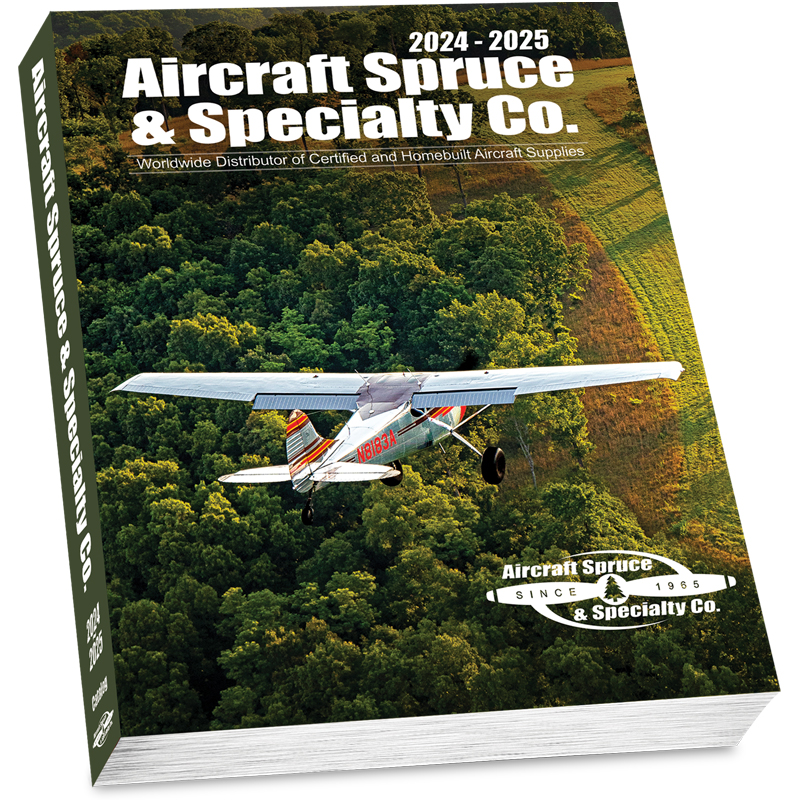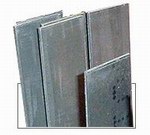Avionics
Batteries
Books & Videos
Charts
Composite Materials
Covering Supplies
Electrical
ELTs
Engine Parts
Flight Training
Flight Planning
Gifts
GPS
Hardware
Headsets
Instruments
Landing Gear
Metals & Plastics
Pilot Supplies
Radios
Tires & Tubes
Tools
Wood Products
Kits & Plans
FBO Supplies
Liqui Moly AERO
Catalogs

GENERAL METAL INFORMATION PART-3
Metals---Plastics_Steel_Steel-Information_GENERAL-METAL-INFORMATION-PART-3

HEAT TREATMENT OF STEEL NORMALIZE ANNEAL Full Anneal - This term is synonymous with annealing and is used to differentiate anneal from bright anneal, stress relief anneal, etc. Spherodize Anneal - This treatment is similar to full annealing except the steel is held at an elevated temperature for a prolonged period of time, followed by slow cooling in order to produce a microstructure where carbides exist in a globular or spheroidal form. Soft Anneal - When maximum softness and ductility are required without change in grain structure, steel should be ordered soft annealed. This process consists of heating to a temperature slightly below the critical temperature and cooling in still air. Stress Relief Anneal - Stress relieving is intended to reduce the residual stresses imparted to the steel in the drawing operation. It generally consists of heating the steel to a suitable point below the critical temperature followed by slow cooling. Bright Anneal - This process consists of annealing in a closely controlled furnace atmosphere which will permit the surface to remain relatively bright. QUENCH TEMPER RELATIONSHIP OF HARDNESS TO TENSILE Brinell Tensile 1000 psi) Standard Ball Tungsten 2.45 -- 3.20 177 -- 3.95 4.45 METAL FINISHING DATA
Cadmium Plating - a nonporous electrolytically deposited layer of cadmium that offers better corrosion resistance for steel than zinc coating. Plating is per specification MIL-P-416A ( or equivalent commercial specification QQ-P-416A). Three types of cadmium plating are considered in this specification: Anodizing - This finish, applied to aluminum by an acid plating process, hardens the surface, reduces porosity, increases abrasion resistance and has high dielectric strength. Anodized aluminum can be dyed almost any color. Specification MIL-A-8625B covers three types of anodizing: Type I – Chromic anodize coating will vary from a light to a dark gray color, depending on the alloy. Coating is given a chromate treatment to seal surface. Bonderizing - a chemical process which rust proofs steel and supplies a base for paint or enamel. This treatment is used on AN301 steel aircraft nails.
By thermal treatment, steel may be made harder or softer, stresses induced or relieved, mechanical properties increased or decreased, crystalline structure changed, machinability enhanced, etc. The terms used to describe such heat treatments and their effects are listed below.
Normalizing consists of uniform heating to a temperature slightly above the point at which grain structure is affected (known as the critical temperature), followed by cooling in still air to room temperature. This produces a uniform structure and hardness throughout.
When not preceded by a descriptive adjective, annealing consists of heating to and holding at a suitable temperature, then allowing to cool slowly. Annealing removes stresses, reduces hardness, increases ductility and produces a structure favorable for formability.
Quenching consists of heating steel above the critical range, then hardening by immersion in an agitated bath of oil, water, brine or caustic. Quenching increases tensile strength, yield point and hardness. It reduces ductility and impact resistance. By subsequent tempering some ductility and impact resistance may be restored, but at some sacrifice of tensile strength, yield point and hardness.
Tempering is the reheating of steel, after quenching, to the specified temperature below the critical range, then air cooling. It is done in furnaces, oil or salt baths, at temperatures varying from 300 to 1200°F. Low tempering temperatures give maximum hardness and wear resistance. Maximum toughness is achieved at the higher temperatures.
STRENGTH OF CARBON & ALLOY STEEL
Indentation
Diameter
mmBrinell Hardness
NumberRockwell Hardness
Number
Strength
(Approx.
Carbide BallB Scale
C Scale
2.50
2.55
2.60
2.65
--
--
--
--
601
578
555
534
--
--
--
--
57.3
56.0
54.7
53.5
328
313
298
288
2.70
2.75
2.80
2.85
2.90
--
--
--
--
495
477
461
444
--
--
--
--
51.0
49.6
48.5
47.1
264
252
242
230
2.95
3.00
3.05
3.10
3.15
415
401
388
375
415
401
388
375
--
--
--
--
44.5
43.1
41.8
40.4
212
202
193
184
3.25
3.30
3.35
3.40
352
341
331
321
352
341
331
321
--
--
--
--
37.9
36.6
35.5
34.3
171
164
159
153
3.45
3.50
3.55
3.60
3.65
302
293
285
277
302
293
285
277
--
--
--
--
32.1
30.9
29.9
28.8
146
141
138
134
3.70
3.75
3.80
3.85
3.90
262
255
248
241
262
255
248
241
--
--
--
100.00
26.6
25.4
24.2
22.8
127
124
120
116
4.00
4.05
4.10
4.15
229
223
217
212
229
223
217
212
98.2
97.3
96.4
95.5
20.5
--
--
--
111
104
103
100
4.20
4.25
4.30
4.35
4.40
201
197
192
187
201
197
192
187
93.8
92.8
91.9
90.7
--
--
--
--
97
94
92
90
4.50
4.55
4.60
4.65
179
174
170
167
179
174
170
167
89.0
87.8
86.8
86.0
--
--
--
--
88
86
84
83
4.70
4.80
4.90
5.00
5.10
156
149
143
137
156
149
143
137
82.9
80.8
78.7
76.4
--
--
--
--
80
73
71
67
5.20
5.30
5.40
5.50
5.60
126
121
116
111
126
121
116
111
72.0
69.0
67.6
65.7
--
--
--
--
63
60
58
56
Type I – Pure silver-colored cadmium plate, without supplementary treatment. This type of cadmium coating was used on all steel aircraft hardware in the past.
Type II – This consists of Type I plating followed by a chromate treatment. Type II plating is a light to dark gold color. It has improved corrosion resistance. Procurement specifications for aircraft hardware now specify Type II plating.
Type III – This is Type I coating followed by a phosphate treatment. It is used mainly as a paint base.
In addition to the type of plating, MIL-P-416A also defines the plating thickness in terms of the following classes:
Class 1 - .0005" minimum, Class 2 - .0003" minimum, Class 3 - .0002" min.
Steel parts with a Rockwell hardness greater than Rc40 (approx. 180,000 PSI tensile strength) must be stress relieved before cleaning and plating, and if they are subject to flexure (springs, etc.) they must be baked at 375°F. within 30 minutes after plating to prevent hydrogen embrittlement.
Type II – Sulfuric anodize coating is the best coating for dying (Class 2). Non-dyed (Class 1) coatings will have a dull yellow-green (gold) appearance when sealed with a chromate treatment.
Type III – Hard anodize coating can be used as an electrical insulation coating or as an abrasion resisting coating on devices such as hydraulic cylinders, wear surfaces and actuating cams.
Phosphate Coating - is a light coating applied to steel parts as a paint base. Most Tinnerman speed nuts are phosphate coated before painting with olive drab paint.
 | Call us at +49 7634 9057700 from 08:00 to 13:00 CET |






